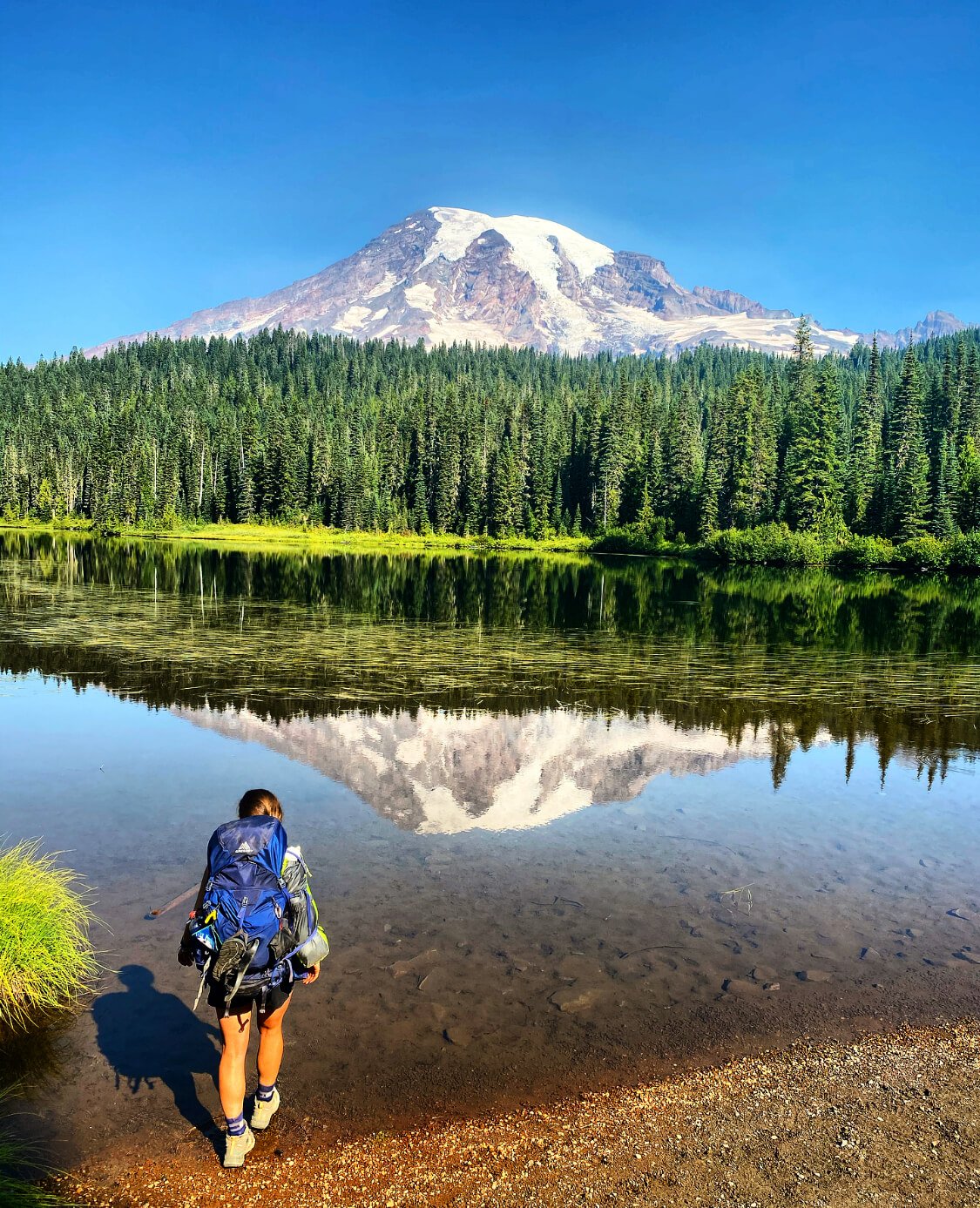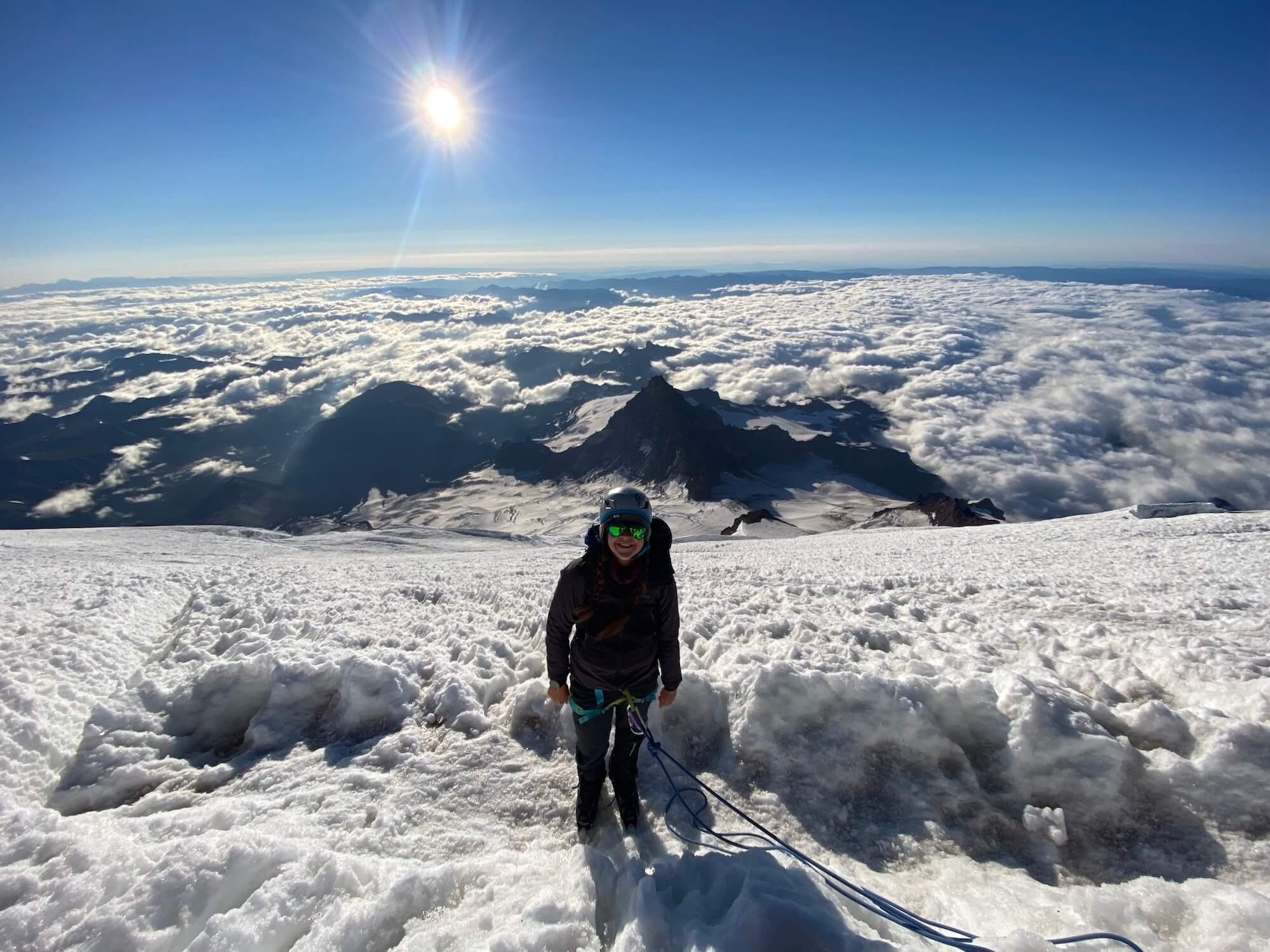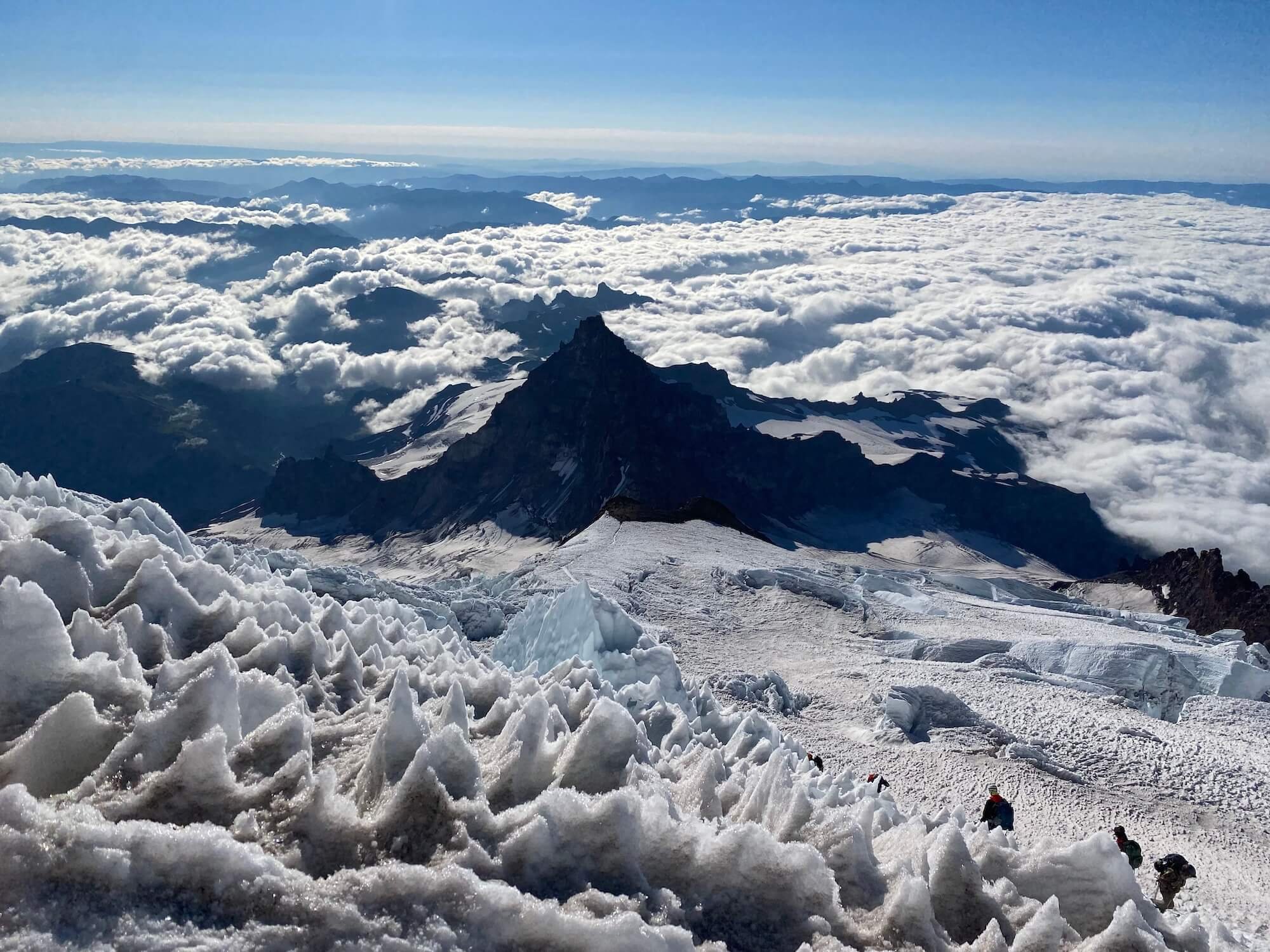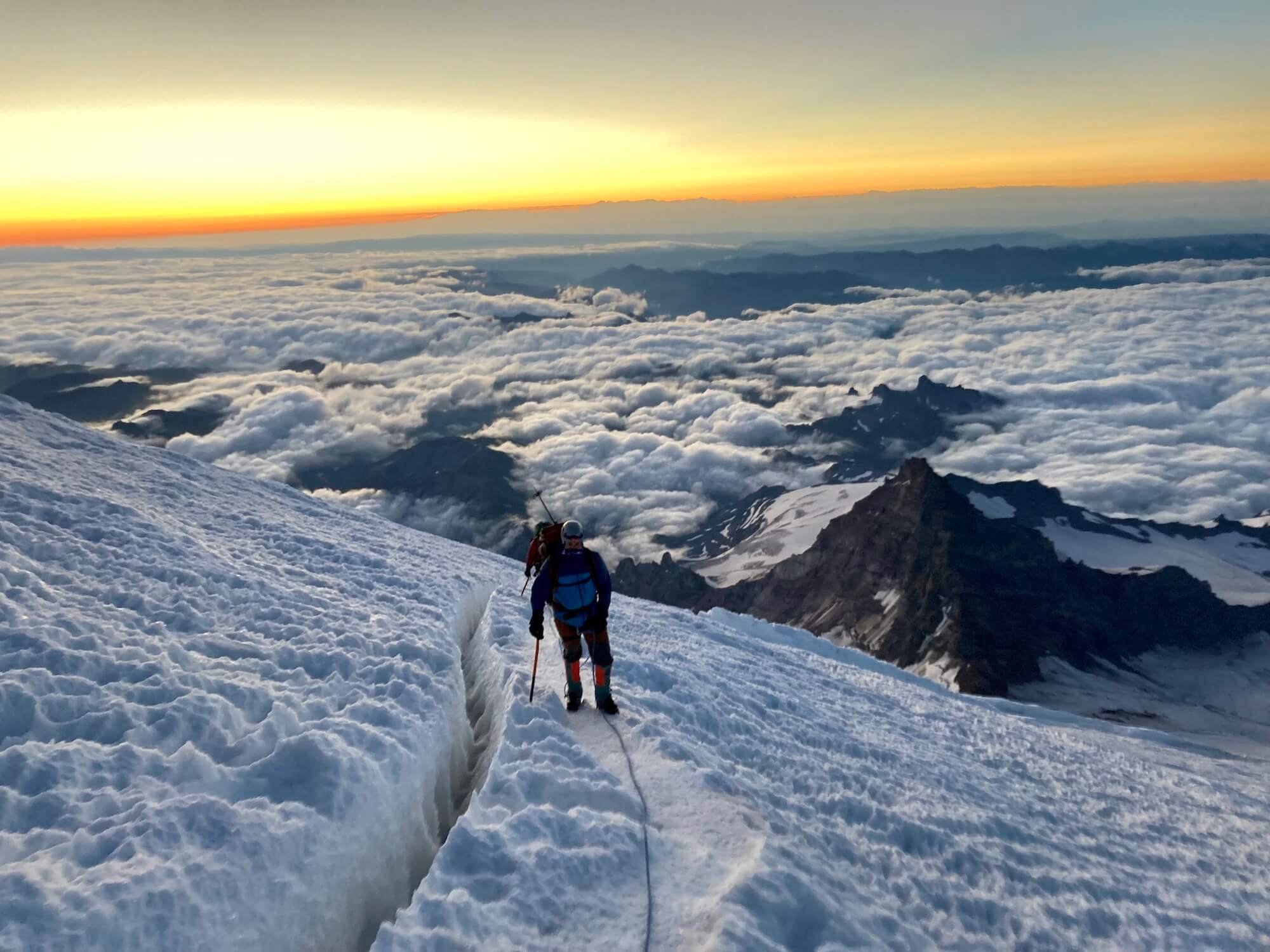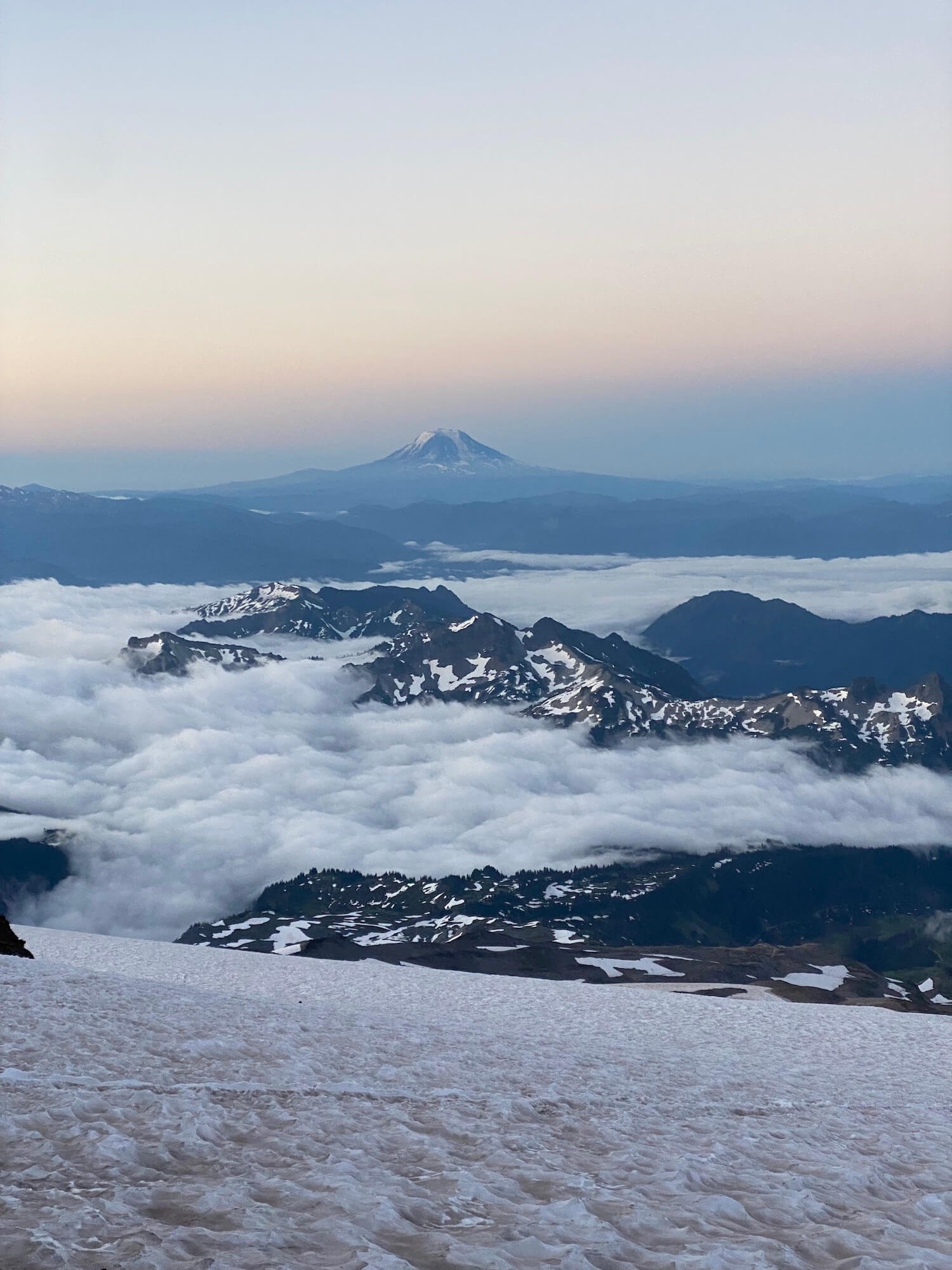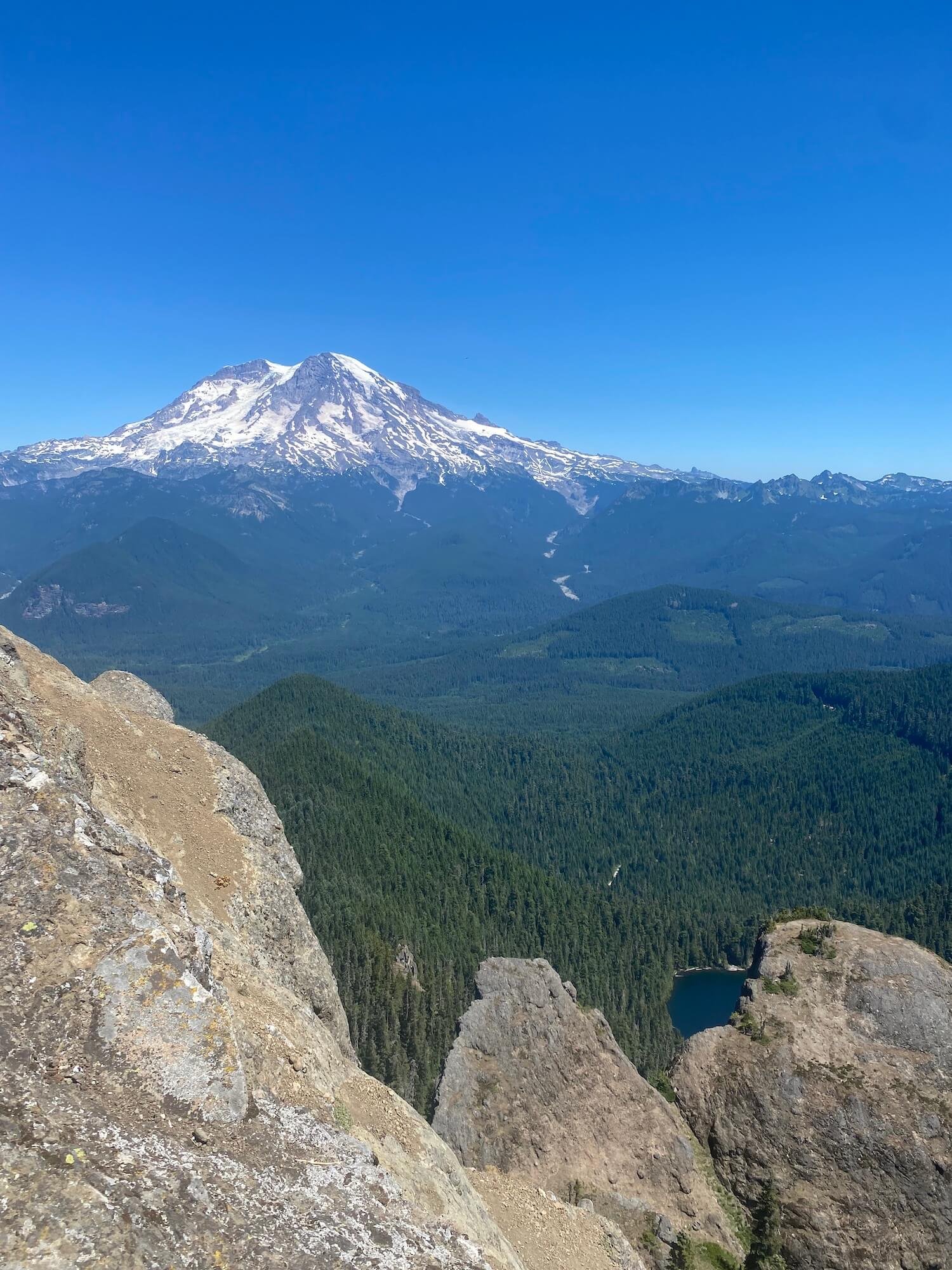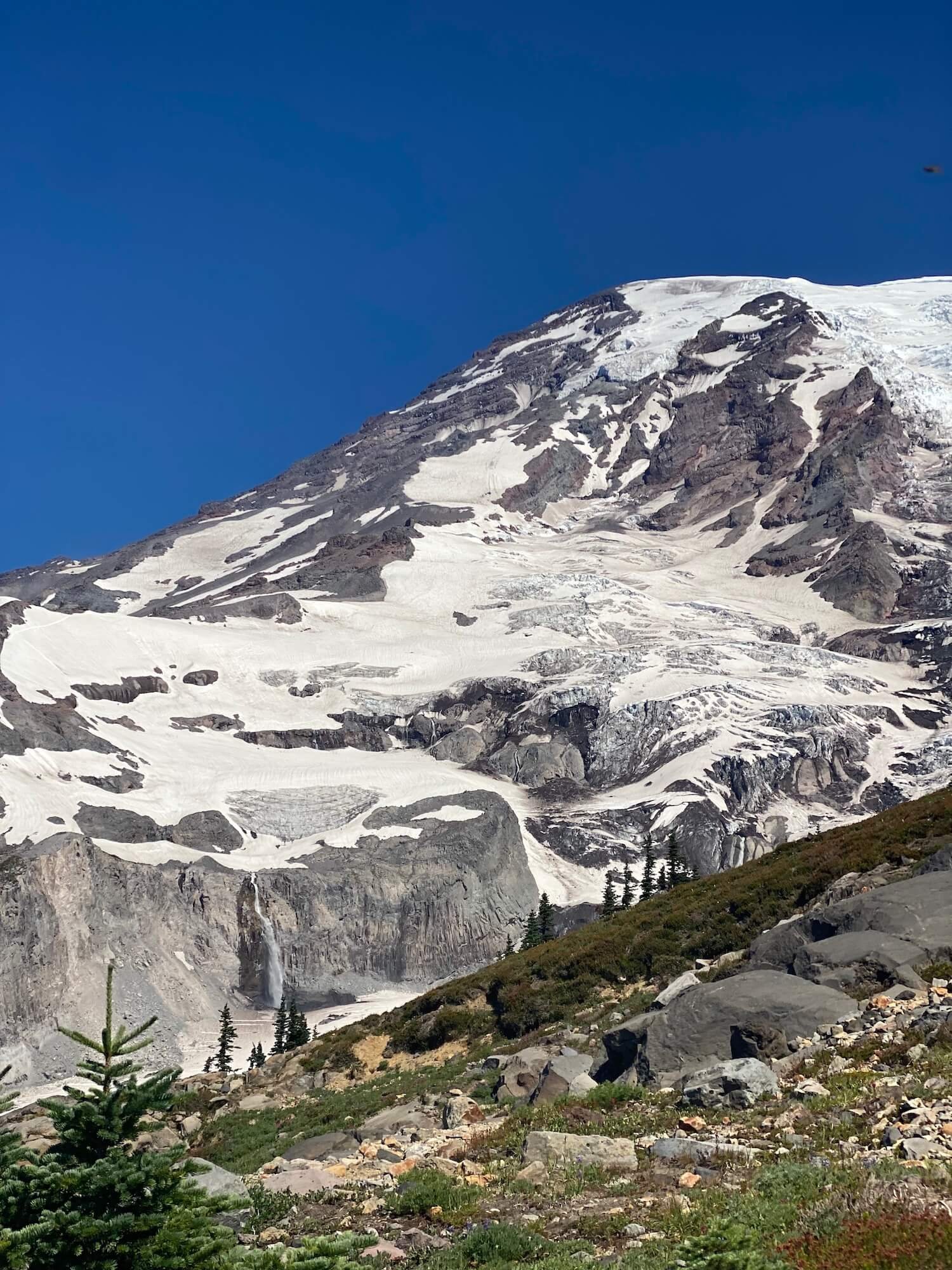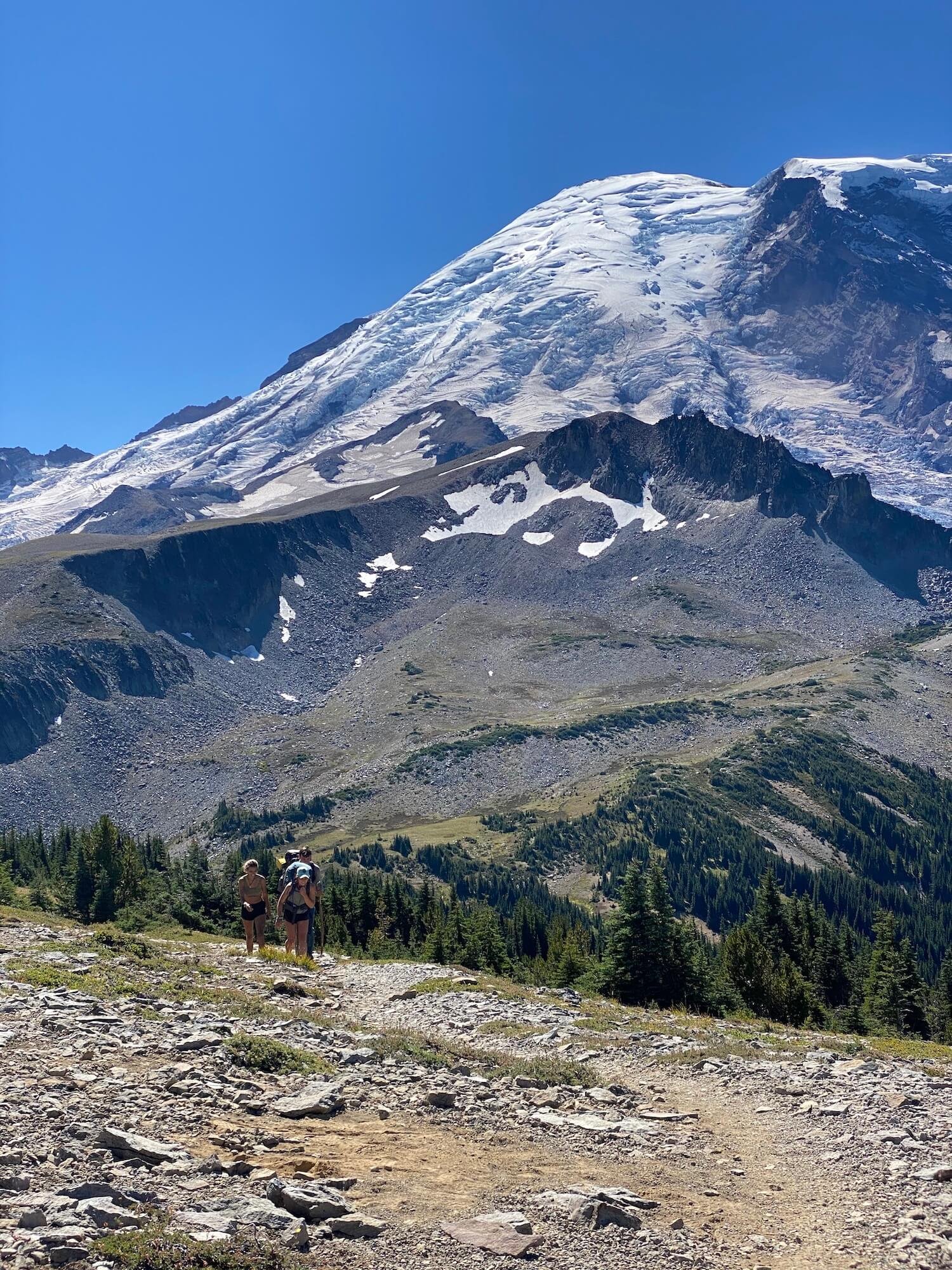Views of Mt Rainier from the Wonderland trail. Photo: Sam Goldklang
Mount Rainier is a 14,410 ft (4392 m) active volcano that dominates the sky in Washington state, US. When locals ask, “Is the mountain out?” they’re always talking about if you can see Mount Rainier while walking around Seattle, from the summit of another peak in the Cascades, or driving south on i90. This peak was known to Native American tribes as Tahoma, which translates to the source of nourishment from the many streams coming from the slopes, or the “white mountain”.
Mount Rainier is the most glaciated peak in the contiguous U.S.A., with 25 major glaciers. Under all the ice and snow is an active volcano. It is the definition of a world of ice and fire. The volcanic activity began one half to one million years ago with the last small explosion occurring about 125 years ago. Mount Rainier is predicted to blow its top sometime in our lifetime…hopefully not any time soon!
The view on the way to the Mt Rainier summit. Photo: Sam Goldklang
Mount Rainier is a nature lover’s paradise with endless trails, over 200 species of wildlife, awe-inspiring views, rushing rivers, towering glaciers, and beautiful wildflowers in the summer. Activities are endless including day-hiking, mountaineering, backpacking, through hiking, snow shoeing, and in bound and backcountry skiing.
Mount Rainier National Park is a bucket list destination for hikers. If you’re thinking about a trip to this national park here are a few reasons to take the plunge…
Day Hiking
There’s over 200 miles (321 km) of trails of varying distance and elevation for all ability levels. Here is a few of the highlights with top notch views:
Mt Rainier from the Burroughs at sunrise. Photo: Sam Goldklang
Volcano views in the distance. Photo: Sam Goldklang
Skyline trail to Panorama point: 5.4 mile loop with 1700 ft elevation gain (8.7km, 518m). This hike is located in the Paradise area of Mount Rainier National Park and truly lives up to its name: wildflowers galore and views of Mount Rainier, Mount Adams, Mount Saint Helens, and Mount Hood on a clear day.
Burroughs Mountain trail: This hike follows a series of 3 burroughs (peaks) in the Sunrise area of Mount Rainier and puts you face to face with the mountain. You can go out and back to the first or second burrough or do a 9.4 mile (15km) loop to hit all 3 with 2562 feet (780m) of elevation gain with a high point of over 7800 ft (2377m). Hike it at sunrise to watch the mountain glow pink!
There are 4 historic fire lookouts, structures built to watch over millions of acres of forests, in Mount Rainier National Park. Two of the most popular are:
Mount Fremont lookout: This hike is also located in the Sunrise area and is 5.6 miles round trip with 900 ft of elevation gain (9km, 274m).
Tolmie Peak Fire lookout: 6.5 miles and 1010 ft of elevation gain (10.5km, 308m). This is named after Dr. William Tolmie who sailed to Fort Vancouver from London. After he saw “The Mountain”, he was entranced and had to take a trip to collect herbs to make medicine. It is located in the Mowich Lake area of Mount Rainier.
Multi-day Hiking
Mount Rainier National Park became the fifth national park in the United States in 1899. One of the best ways to experience the diversity of the area is with a multi-day hike. The prime hiking season to explore Mount Rainier is between late July and into September, when high-mountain trails are free of snow.
Reflection lakes, Mt Rainier National Park. Photo: Sam Goldklang
The Wonderland Trail: - a 93 mile (150km) loop circumnavigating Mt Rainier where you get up close and personal with this beautiful volcano from all angles. Wonder is an understatement. The fastest known time to complete the trail is 16 hours 40 minutes 55 seconds, but most people complete the trail in 8-13 days. Permits are required for backcountry campsites but snagging them is like finding the golden ticket.
Mount Rainier summit: climb to stand on the 5th highest peak and tallest volcano in the lower 48 states. There are various routes to climb and/or ski this volcano but there is at least 9000 ft (2743 m) of elevation gain in the shortest approach and technical mountaineering gear and rope skills are necessary. You can climb it guided or if you have the necessary training and preparation you can get permits (necessary above 10,000 ft / 3048m) to climb it as an independent team. Some people climb this beast in a single day while others spend 1-2 nights on the mountain to acclimate, break up the climb, and watch the sunrise from up high.
Nearing the summit at sunrise. Photo: Sam Goldklang
Camp Muir: Sitting at 10,188 ft (3105m), Camp Muir is the highest you can climb on Mount Rainier without a permit. This climb is mostly snow covered year round and may require crampons and an ice axe, microspikes, or climbing skins and skis. The views of distant volcanoes and mountain peaks are breathtaking.
Camp Muir is a popular destination on its own or a stop on the way to the summit.You can tent camp on the glacier but there is also a guide hut and a climbers hut. During John Muir’s 1888 summit of Mount Rainier, he had suggested the area as a good place to camp due to the false belief that it would provide shelter from the wind. It was then named “cloud camp” and later renamed Camp Muir. (Read John Muir’s essay documenting his 1888 ascent of Mount Rainier here.)
There are many ways to enjoy the grandeur of Mount Rainier National Park. Whether it be a casual walk through the park to see the wildflowers, a longer day hike to a find a look out or close up view of the queen, an overnight backpacking trip to soak it all in, or a lifetime goal of a summit push, a trip to this National Park will amaze and inspire you.
Author: Sam Goldklang, USA
Sam is an everyday adventurer who resides in Washington State, USA. She has completed the Wonderland trail and summitted the 5 tallest peaks in the lower 48 states, including Mt Rainier. Sam has hiked around the world with some of her notable trails being: the Tour Du Mont Blanc in the Alps, The Kepler and Routeburn tracks in New Zealand, the Salkantay Trek in Peru, the Mt Toubkal trek through the Atlas Mountains in Morocco, The Fisherman's trail in Portugal, and Trolltunga in Norway. Sam spends her days working as a Pediatric Nurse Practitioner and on the weekends she'll be hiking, camping, trail running, backpacking, or skiing around the Pacific Northwest. Follow her adventures on instagram: @sgoldk
WHO ARE WE?
The Hiking Club empowers anyone to walk the way they want in the wild with personalised self-guided hiking experiences that are easy to find, quick to plan and simple to navigate.
We believe hiking experiences have the power to transform lives. With a growing range of personalised hikes that take into account your preferences, fitness and interests, we give you everything you need to explore the legendary trails of the world!
